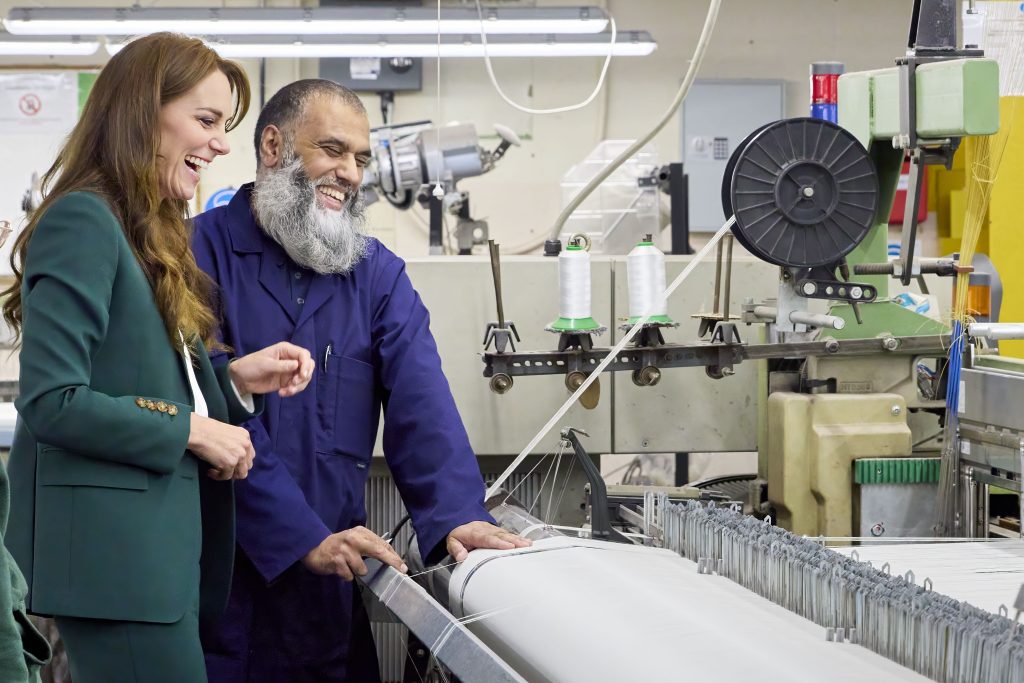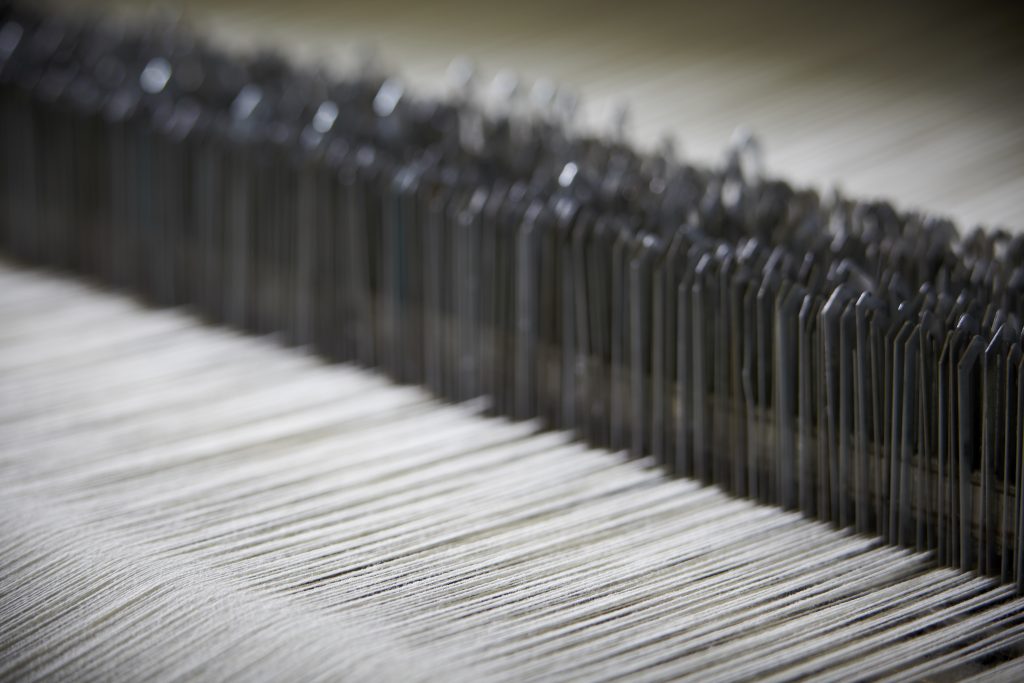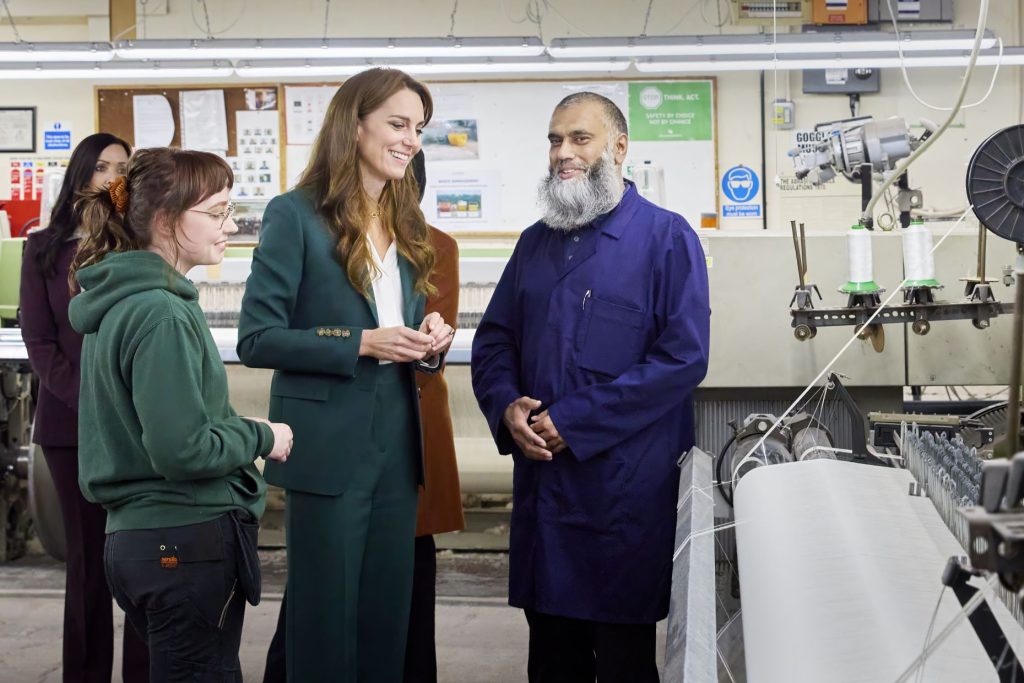Ask the Expert: Zeb Akhtar, Senior Weaver Trainer
For the latest blog in this series, we sat down with Zeb Akhtar, Senior Weaving Trainer at AW Hainsworth. We asked him about his day at work, what he enjoys about weaving, and how it felt to have his photograph published by the world’s press.

When did you start working at AW Hainsworth?
I started working at the mill in 2016. Before that I was working at Alfed Brown in Bramley. I’ve been a weaver for 27 years and must have spent about 30 years working in textiles altogether. I got into it after friends and family told me about a job vacancy at a textile mill and I thought, why not give it a try. I did various different jobs at the beginning, but once I learned weaving I decided to stick with it and it’s been my line of work ever since.
How did you get involved in your current role?
I first joined Hainsworth as a Weaver. However, the business recognised it needed to bring in more people, and Weavers aren’t easy to find – there aren’t many people out there with that skill. So, because of my years of experience I was made a Senior Weaving Trainer.
There’s a lot of steps involved in weaving, it’s not all plain sailing. As well as being able to work the loom you also have to know how to read a loom card – that’s really important. The loom card gives you all the information about how a particular cloth is woven, how it’s laid in the dents. If you didn’t know how to read that card you’d be stuck, you’d start putting yarns in the wrong place and it would show up as a fault in the cloth.
Since I became a trainer I’ve fully trained up 10 people as Weavers, and they’re now able to run a loom and get on by themselves perfectly fine.
What does a typical day at AW Hainsworth look like?
At the start of a shift we all start by talking to the Weavers from the previous shift, to share any information about what’s being woven and learn if there’s any problems that need resolving. We do the same thing for the next shift when we’re done for the day ourselves. Once I’m on the loom, I start by taking up the yarn ends and putting on the weft. It’s the weaver’s job to make sure the loom keeps going and runs efficiently as possible.

Because I have a lot of experience I usually work across all the different types of looms and move around helping my fellow Weavers. We have quite a variety of looms at the mill, including a new one that’s just arrived. I like the airjet looms that we use to weave Protective fabrics the most. They have a screen that displays how the loom is working, any faults that have been registered, any stoppages. It makes it a lot easier to check the fabric’s progress.
While I’m working, my Trainee Weavers shadow me throughout the shift. It’s important that they stay close by so they can learn by watching me. There are a number of things that could go wrong on the looms, but it can take a long time for a specific problem to happen. When it does, you can’t always abandon the loom and find the Trainee to show them how to solve it. But if they’re close by at all times, they can see there and then how things are done.
Depending on the individual, it can take between nine months to a year for a Weaver to be fully trained up. By then they’ll more or less know what they have to do on a daily basis, though every now and then they might still come across something they haven’t seen and which myself or another Senior Weaver will have to help them with.
Running a basic loom is quite straightforward, but a more difficult weaving plan obviously takes a lot more time to learn. Trainee Weavers can’t be thrown in at the deep end, they need to start with more simple tasks and work their way up.
Do you have any advice for anyone getting into your line of work?
My advice would be, don’t think weaving is an easy job. You might think it looks easy when you walk through the weaving shed and see a Weaver stood by a loom with their arms folded. But what you don’t see is that it takes a lot of mental concentration to run a loom – you have to constantly think ahead and anticipate problems before they arise. It takes a lot of work to make it look easy!
With the Trainee Weavers, I’m giving them information and advice that I’ve picked up over many years of weaving. I’m not letting them learn the hard way, but instead I’m trying to guide them in the right direction and let them know what the common issues in weaving are, what they need to do to tackle them and prevent them happening again. We always try to help each other in the weaving shed, we’re always looking out for our colleagues at the neighbouring looms.

What is your proudest moment working here?
Obviously, we recently had a visit from the Princess of Wales, and I was selected to be one of the people to represent Hainsworth and demonstrate our looms to her. I was joined by a colleague who had recently passed her training and been signed off as a Weaver so it felt like a real achievement from my work over the years.
I’m also proud to say that I’ve trained up 10 Weavers in my time at Hainsworth, and as time progresses they might go on to train up someone else. The skills will continue to pass down and a whole new generation of Weavers will come on board – I’m proud to have played a part in that.
How did it feel to have the photo of you and the Princess published in all the newspapers and magazines?
I was very shocked by it! It was a good shot actually, it was a really genuine moment and we had a good laugh that was captured by the photographers.
What do you like the most about your role?
I like being able to see a finished product that you’ve played some part in making. Weaving is when you start to see the yarn become converted into cloth, and it’s very satisfying to see it come off the loom.
What interests you outside of work?
I like to attend my local mosque, they often have religious events or talks and I like to stay involved in a little bit of community work. I also spend a lot of time with my family and friends – I have five adult children and a four-year-old grandson who keep me busy.
